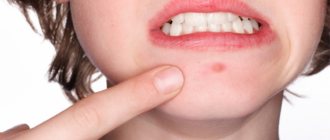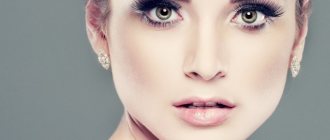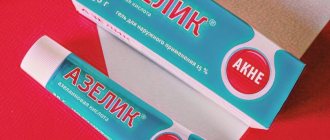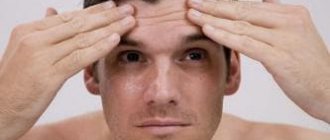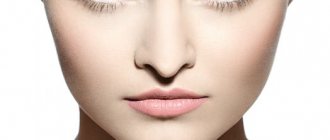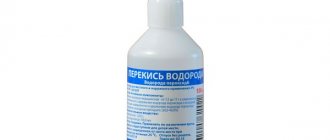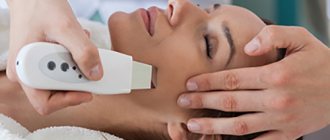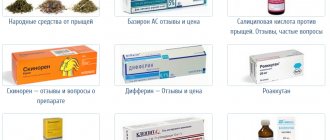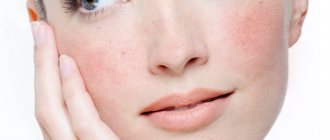In a child during puberty, this is caused by hormonal changes in the body. However, there are many other reasons.
Hormonal changes also occur during pregnancy, menopause, during the development of premenstrual syndrome, and also while taking hormonal medications.
Another common cause of skin problems is an unhealthy lifestyle associated with sleep disturbances, poor and unhealthy diet, alcohol abuse, and smoking.
In addition, acne can appear due to disturbances in the gastrointestinal tract, as well as diseases of the immune system, genitourinary system and gall bladder.
Why else might acne appear? One of the most basic and common causes is oily facial skin, but this problem can be eliminated by using simple home recipes, which we will definitely discuss further.
Do not miss
- Do not miss
What to do when nothing helps oily skin: advice from a cosmetologist
Among other things, the disease can often be caused by the use of poor quality cosmetics , insufficient skin care and banal contact of delicate facial skin with dirty hands.
Due to all of the above, the first step towards solving the problem should be a medical examination with tests to identify the causes and treatment of identified diseases. You can also visit a cosmetologist to learn more about your skin type and the care it requires.
What should you not do if you have an inflamed pimple on your nose*?
If you have inflammatory acne* on the nose and other areas of the face and body, it is strictly forbidden to perform the following actions106:
- Squeeze out rashes. Self-opening of acne* leads to the active spread of infection, a sharp increase in inflammatory rashes, damage to blood vessels, and tissue scarring.
- Washing your face too often. Many people mistakenly assume that frequent washing will help get rid of acne quickly. In fact, such manipulations destroy the natural protective barrier of the skin, lead to pathological activity of the sebaceous glands, and an exponential increase in the number of acne. Two washes a day are enough.
- Use alcohol lotions. Despite the great temptation to dry out a red pimple under your nose with alcohol-containing products, it is better to abandon this idea. Dry skin, chemical burns, pathogenic activity of the sebaceous glands, intensive development of inflammation - these are only a small part of the troubles that result from the frequent use of alcohol products for acne.
- Mask pimples on the nose. Regular use of foundation and powder to cover acne can lead to an increase in the number of breakouts. Makeup is not a contraindication for acne, but frequent use of thick cosmetics can lead to clogged pores.
"Triangle of Death" and acne
Experts do not recommend squeezing out acne on your own, and if they are located in the nasolabial area, they warn about the mortal danger of such an action.
During inflammation, the blood vessels in the affected area dilate. This is required so that leukocytes quickly reach the inflamed area. When squeezing out an acne element, we exert a mechanical force on it, risking damage to the walls of nearby vessels. Such actions are a direct path to infection. It quickly spreads, heading to the sinuses and meninges. When the latter become inflamed, meningitis develops, and when infection enters the sinuses, blood clots may appear. The formation of blood clots is explained by the fact that blood coagulates around particles from the inflamed lesion, and the neoplasm increases to such a size that it clogs the vessel.
The danger is that the venous sinuses supply the brain with blood. In the area of the nasolabial triangle there is a dense network of blood supply, so the soft tissues of the face heal relatively quickly. There are many veins, arteries, and anastomoses in this area. Veins form two networks – deep and superficial. One of the most important veins, the facial vein, is connected to the deep pterygoid venous plexus and also flows into the jugular vein, which leaves the cranial cavity and descends to the neck.
The facial vein is often involved in the process of inflammation during suppuration on the wings of the nose and upper lip. Under normal conditions, the direction of outflow of venous blood is from top to bottom to the jugular vein. But if blood clots form inside the facial vein and its tributaries, retrograde (reverse) blood flow occurs, which leads to inflammation of the sinuses and meningitis. They cannot always be diagnosed immediately, which aggravates the problem and sometimes leads to irreversible consequences.
What procedures cannot be performed at home if you have acne* on your nose?
Steaming, scrubbing, and mechanical cleaning are the most common and quite dangerous scheme for fighting acne at home. If there are foci of inflammation on the skin, such manipulations only aggravate the situation. And here's why106:
- Local heating promotes the active proliferation of bacteria, causes pathogenic activity of the sebaceous glands, which in turn leads to an expansion of the acne area and causes additional inflammation.
- Using a scrub in the presence of foci of inflammation will only aggravate the problem and expand the affected area. Abrasive particles injure the skin. Scrubbing can only be done when acne is in remission.
- Home manual cleansing is a taboo for acne-affected skin. This procedure can be performed only in the absence of inflammatory elements and preferably in a cosmetologist’s office. Independent attempts to carry out deep cleaning can aggravate the problem, lead to the formation of large pores, the appearance of scars and age spots (post-acne).
It is better to consult a dermatologist or cosmetologist about home treatments. The specialist will prescribe the necessary course of treatment and help you choose the right cosmetics to care for problem skin.
Symptoms of acne in children
Pimples appear on any part of the body. However, most often they appear in places where there is a high concentration of sebaceous glands.
The most commonly affected areas in children with acne include:
- Ears. Acne in a child's ears is localized behind the auricle, along the edge and on the lobe, closer to the temporal region at the upper base. Acne looks like blackheads or inflamed papules.
- Face. Acne on the face of a child is characterized by a few individual closed or open comedones. Closed ones are represented by yellowish or pearly-white papules, the size of which varies from 1 to 2 mm. Over time, they turn into open comedones, which look like blackheads.
- Nose. Acne on a child's nose appears as isolated pustules or papules - surrounded by a pink rim. Characterized by rapid (1-2 weeks) spontaneous resolution.
Also, acne in children can be localized on the chest, upper back and neck. After acne disappears, there are usually no traces left on the skin. The situation is complicated by infection - signs of inflammation appear (swelling, redness along the periphery). The elements transform into pustules with purulent discharge, which is yellow in color. In this case, it is quite difficult to avoid marks on the skin.
What does modern cosmetology offer?
Professional cosmetology offers a number of procedures that help improve the condition of acne skin56,13:
- Darsonvalization. The procedure is based on the effect of high-frequency currents of low strength on the skin. It has an antibacterial and soothing effect, reduces the appearance of acne.
- Facial cleansing (mechanical, atraumatic, vacuum, ultrasonic). Contact or non-contact skin cleansing helps remove impurities and toxins from pores, normalizes metabolic processes and blood supply to cells, and reduces the appearance of acne. The choice of a specific technology usually depends on the complexity of the disease. The procedure is not performed if there is inflammation.
- Cryotherapy. The essence of the procedure is to treat the skin with liquid nitrogen, which has a pronounced bactericidal effect. It dries the skin, suppresses pathogenic microflora, and relieves inflammation.
- Ozone therapy. The procedure is based on the subcutaneous injection of an ozone mixture into the affected areas of the skin. It helps destroy pathogenic microflora, stimulates the production of elastin and collagen, improves blood microcirculation, and activates metabolic processes in cells.
- Mesotherapy. The procedure involves the subcutaneous administration of “meso-cocktails”, which contain amino acids, minerals, antibiotics, and vitamins (the composition is selected individually by the doctor). It normalizes sebum secretion, tightens pores, and improves the overall condition of the skin.
- Plasma therapy. Subcutaneous injection of platelet-rich plasma into problem areas. According to reviews from professional cosmetologists and dermatologists, this procedure helps reduce the intensity of the inflammatory process, cell regeneration, and reduce the manifestations of post-acne.
All cosmetic procedures are permissible only in the absence of inflammation on the skin. Otherwise, even the safest ways to combat acne can greatly aggravate the problem.
Causes of boils in adults
The main cause of the disease is the activation of staphylococci and streptococci. These same pathogens cause tonsillitis, chronic tonsillitis and sinusitis. In most adults, these microorganisms are constantly present on the mucous membranes, but diseases do not always develop. For inflammation to occur, predisposing factors must occur:
- injuries and mechanical damage to the nasal cavity, including pulling out hairs from the nasal passages - infection can easily get into the wounds; This category also includes surgical reasons: rhinoplasty, installation of implants, etc.;
- a chronic source of infection in the body - chronic tonsillitis, chronic sinusitis, caries, etc.;
- purulent skin diseases of the nasal cavity;
- reduced immunity: the cause of the appearance of an abscess in adults can be simple hypothermia, lack of vitamins, stress, diabetes, HIV, oncology and other factors that “hit” the body’s own defenses;
- violation of basic hygiene rules (neglecting water procedures, constantly touching the face with dirty hands, squeezing pimples are common causes of chirp);
- unfavorable working conditions, work in hazardous industries with polluted air, constant contact with fuel oil and other fuels and lubricants;
- Hormonal imbalance is a common cause of ulcers in pregnant and adult women during menopause.
Treatment of an external abscess and treatment of a boil inside the nose will be most effective if its cause is correctly identified. Finding out the cause of the disease and prescribing a competent treatment regimen is the profile of an otorhinolaryngologist.
Ingredients for preparing scrubs to clean facial pores and get rid of comedones:
• Honey. It has nutritional properties. Thanks to its structure, it penetrates into pores, cleansing them. Honey contains many beneficial elements that have an anti-inflammatory effect.
• Sea salt . It is an excellent abrasive, which is also rich in various microelements. Nourishes the skin and gives it elasticity.
• Cinnamon. Rich in vitamins and active substances. Eliminates excessive pallor and restores a healthy complexion.
• Cereals. They perfectly exfoliate dead particles of the epidermis, absorb dirt, cleanse pores, and also have a moisturizing effect.
• Orange or lemon peel. Saturates the skin with vitamin C, which promotes the synthesis of new collagen and elastic fibers.
• Baking soda. A strong abrasive that perfectly cleanses sweat glands and also has a whitening effect. Read recipes for masks and peeling here.
You can use gel, cream, yogurt, milk, or plain water as a base. The resulting mixture should be thick enough to be easily applied with massaging movements.
Mask for tightening pores against blackheads
Symptoms of the disease
Regardless of the location, the formation of an abscess goes through the same stages, so the symptoms of a boil on the wing of the nose and the symptoms of an internal boil are the same.
The disease occurs in two stages. The first stage is the infiltration stage. It begins with inflammation of the hair follicle. The stage lasts a day or two. Clinically, this is manifested by the following symptoms: the appearance of a painful lump that turns red and swells. A black dot is visible in the center of the seal. The pain intensifies while talking or eating. Headaches, weakness, and elevated body temperature appear - these are symptoms of an ongoing inflammatory process.
The next stage, the abscess formation stage, takes from three to seven days. Its main symptom is a softening of the compaction and the appearance of a white-yellow tip on it, which is called the core of the boil. Relief occurs when the rod breaks through and the contents of the abscess come out. At this moment, the unpleasant and painful symptoms begin to subside, and the patient feels much better.
Folk remedies that normalize the functioning of the sebaceous glands and prevent the appearance of comedones
When considering ways to get rid of comedones, do not forget about traditional medicine.
Mixtures made from natural ingredients have many advantages.
Firstly, you can easily prepare them yourself at no extra cost. Secondly, they perfectly nourish the skin without causing harm to it. Thirdly, there are a huge variety of folk recipes, among which you can easily find the right one.
Conventionally, all folk methods of getting rid of blackheads can be divided into scrubs and masks.
Manual facial cleansing from comedones
Steam bath before cleansing the face of blackheads on the nose
This cleansing consists of steaming (vaporization) followed by squeezing out the comedones with your hands. Failure to do this process carefully can lead to infection, which can lead to acne or even blood poisoning. Steam is not recommended for use by people with dry skin, dilated blood vessels, or those suffering from skin diseases. Having taken these points into account, you can proceed. Let's look at the whole process step by step.
1. Cleanse your face. Remove makeup using the milk that suits you. Wash yourself.
2. Prepare a special steam bath. Stir a teaspoon of salt in boiling water, adding a little herbal infusion. For example, a decoction of linden or chamomile will be useful.
3. Lean over the steam. You shouldn't go too low, otherwise you might get burned. Steam for approximately 10-12 minutes.
4. Clean your pores by simply squeezing out all the dirt with your fingers. Before doing this, be sure to wash and disinfect your hands. Do not press too hard; after steaming, the glands have expanded enough so that the comedones come out of them with the slightest pressure.
5. After cleansing, the sweat glands are narrowed using a mask with a tightening effect. If desired, you can use regular ice cubes.
6. Finally, apply moisturizer.
Manual cleaning can be done every 7-10 days, not more often.
You can also buy all kinds of devices and tools for these purposes in the Aliexpress online store by following this link . For beginners, we recommend the article “ First order on Aliexpress ”
